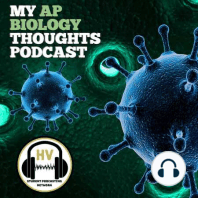6 min listen
Food Webs and Food Chains
ratings:
Length:
6 minutes
Released:
Feb 15, 2021
Format:
Podcast episode
Description
My AP Biology ThoughtsUnit 8 Episode #22Welcome to My AP Biology Thoughts podcast, my name is Pauline and I am your host for episode 22 called Unit 8 Ecology: Food Web and Food Chains and types of organisms.. Today we will be discussing the classification of different organisms in each trophic level of food webs and varying food chains Segment 1: Introduction to Food Chains and Food WebsTo start off, let's differentiate between food chains and food webs. The picture shows how food chains are a smaller representation of an ecosystem, so several food chains within one ecosystem make up a food web. Therefore, a food chain will show only one organism at each trophic level, while a food web will show multiple producers for example. That brings us into identifying the types of organisms in these food chains and webs. At the bottom are the producers that convert the solar energy into chemical energy that can be used by other organisms. All producers are autotrophs, meaning they make their own food. These producers are eaten by herbivores known as primary consumers. The next trophic levels are made of secondary consumers, tertiary consumers and so on. These consumers are either omnivores or carnivores. Two other types of organisms that are often forgotten about are detritivores and decomposers. Detritivores consume material to break it down, so this would be like an earthworm. Decomposers feed off of dead decaying matter like fungi. Fungi release a liquid that breaks down the matter to suck up the nutrients. A key element of food chains is that only 10% of energy is transferred between trophic levels, so producers must provide a lot of energy to sustain the highest consumers. Segment 2: Examples of to Food Chains and Food WebsA very local example of a food chain here in NJ is shown in the picture including grass as a producer eaten by a grasshopper, who would then be eaten by a small bird. This bird as a secondary consumer would be eaten by a snake as a tertiary consumer. And to take it one step further, an owl could eat the snake. This is an example of only one food chain, so a NJ food web would maybe also include a deer as a primary consumer and a fox as a secondary consumer. Segment 3: Digging Deeper into Food Chains and Food WebsFood webs and the role of each organism involved within the food chain fit into the greater picture of ecology because of the effects that changes in energy availability can have on the ecosystem. For example, if there is a decrease in the amount of free energy available to the producer...
Released:
Feb 15, 2021
Format:
Podcast episode
Titles in the series (100)
Endotherms and Ectotherms by My AP Biology Thoughts
